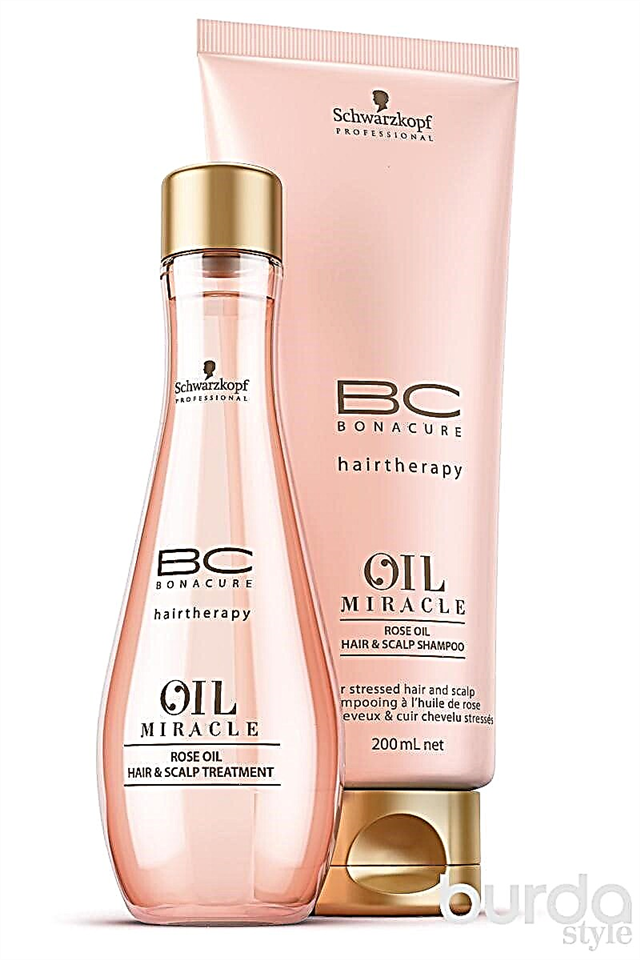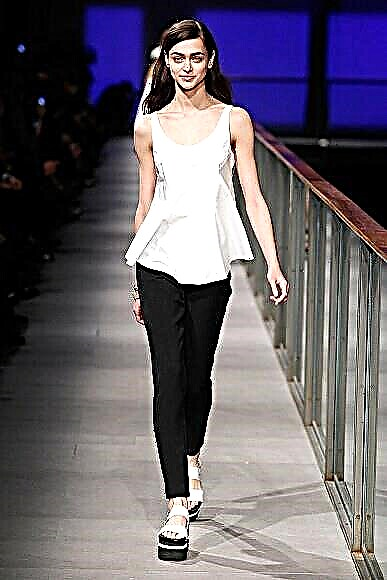Share
Pin
Tweet
Send
Share
Send
Fashion trends of the 40s of the last century were determined, first of all, by the current political and social situation.
At the end of the 30s, militaristic moods were strong in society, which resulted, inter alia, in a craving for sport, which remarkably realizes the spirit of rivalry and primacy in a peaceful manner.
Large patch pockets, lapels, cuffs come into fashion at this time. With the outbreak of war, the question arose of a shortage of materials: leather, natural silk, wool and cotton went to military needs. Moreover, in 1940, the Decree on the Limitation of Supply was issued, which regulates the amount of fabric that was allowed to be used for clothing production. All this, of course, was reflected in the fashion for the minimalism of details of the cut and the poverty of decoration: the skirts became shorter and narrower, there were practically no decor elements and other details that required the use of additional fabric. As for the color scheme, it also did not differ in its variety: black, gray, blue, khaki. Typical costumes of that era resembled a military uniform: jackets had square shoulders with shoulder pads, belts were made like army belts, pockets were sewn voluminous. The most common items in clothing were a pencil skirt, shirt dress. Since the end of 1942, as a result of savings, white collars and cuffs have come into fashion: there was nothing to sew white blouses and shirts with, and I wanted to look elegant and neat.

The hats so popular in the late 30s at first rapidly declined in size, and then completely gave way to shawls, berets, bandages and turbanes. In addition, these hats were also very practical, because women did not always succeed in maintaining their hairstyle in good condition.
8 things Chanel has styled
Cosmetics have become an inadmissible luxury. However, the substitution was found in the form of "naturel" means: for example, Italians tinted eyebrows with a burnt tree or bone, coloring vegetables and wine replaced the lipstick.

Resourcefulness had to be shown not only in the selection and wearing of hats, the search for a replacement for cosmetics, but also in the creation of the outfits themselves. It was almost impossible to get new things, and this fact in wartime leads to the spread of second-hand clothes and hand made clothes. Magazines proclaimed a fashion for "patchwork dresses" sewn from several old things. Created with state support in the UK, the fashion magazine Make and Mend advised on how to make jewelry from bottle caps, corks and cassette reels. The lack of materials and things led to the fact that a conservative women's suit, with the same color and texture as a jacket and skirt, could consist of top and bottom, sewn from fabrics of different types and colors. Women also saved on stockings by simply drawing a neat black arrow with a pencil on their feet.

However, military deprivation and restrictions forced the imagination of not only ordinary women, but also many designers to work, and encouraged the creation of new silhouettes and the use of new materials that corresponded to the spirit of the times. So, for example, at the very beginning of World War II, the Frenchman Robert Piguet and the British Edward Moline created coats with hoods and pajamas, positioning them as clothes for "shelters". Elsa Schiaparelli presented warm corduroy suits with voluminous pockets and overalls, while shoe and accessory manufacturers added large bags that hold gas masks and comfortable low-heeled shoes. To preserve genuine leather for military needs, heels and the sole of shoes began to be made of wood, the upper - of suede or other materials.

Especially successful was the young Italian Salvatore Ferragamo, who created futuristic models of shoes from straw, felt, dermatin, hemp and even cellophane.Guccio Gucci, who had already become famous by then, was experiencing interruptions in the supply of the usual high-quality materials and introduced linen, hemp, and bamboo into the production of bags (as a result, the famous leather bag with a bamboo handle will appear in 1947).
One of the revolutionary inventions in fashion in the 40s was nylon. The first nylon stockings were presented to the public in 1940, later underwear began to be made from it. The widespread distribution of nylon was facilitated by the lack of silk - it was used in wartime mainly for the manufacture of parachutes, maps and bullet bags.
After the Nazi army captured Paris, some designers, such as Elsa Schiaparelli, emigrated to the States, some simply closed their boutiques like Coco Chanel. However, Hitler's plans included leaving Paris the capital of fashion, which was supposed to serve the German elite. And many fashion houses also worked in wartime - among them Lanvin, Balenciaga, Rochas, Nina Ricci, Jacques Fath and others.

Designers had to succumb to the influence of Nazi culture: the ideal of a German woman in the 40s was a strong and athletically built woman who could work in the field and raise children. Hence the emergence of new motifs taken from peasant and medieval costumes: floral prints on dresses, embroidery on blouses, checkered suits for hunting and wide-brimmed straw hats came into fashion. The image of a beautiful peasant woman picking flowers in an open field became a favorite among fashion magazines.
Since the occupation of Paris, the fashion vector has moved to the United States. The Americans, who made up the bulk of the clientele of the French haute couture in the pre-war years, contributed to the rapid development of their own fashion industry and the widespread distribution of ready-made clothes - pret-a-porte.

So, for example, Claire Mackerdell presented a line of practical and at the same time innovative sportswear of simple cut from cotton fabrics and a wool jersey, and she also became the progenitor of the idea of a capsule wardrobe.
Dior in miniature: small couture dresses
After the war, the fashion industry is slowly moving away from shock. In 1945, the High Fashion Syndicate introduced the Fashion Theater project. The most interesting models from the latest collections of Parisian couturiers were shown in reduced size on miniature mannequins 70 cm high. Over the year, the exhibition was presented in 9 largest cities in the world, which allowed to restore the authority of haute couture. In the same year, Pierre Balmen opens his first own boutique. The war was over, and big changes awaited fashion.

In 1946, a new era was marked by the first "big bang" - the presentation of a bikini swimsuit created by Louis Rear and named after the Bikini Atoll. The second fashionable “explosion” was arranged by Christian Dior in 1947, presenting to the world his collection in the style of new look, in which he presented the legendary jacket “bar”.

Maria Prokudina
Maria is a longtime member of our friendly sewing community, one of the BurdaStyle.ru old-timers. Sewing learned from the patterns of the magazine Burda.
In 2013 Masha won the spring-summer Burda Style contest. A couple of years ago, I decided to comprehend the intricacies of sewing under the guidance of our eminent teachers at the Burda Academy, in order to learn how to design and model patterns on our own. And most recently, she graduated from a style school.
Masha maintains her blog and Instagram page.
For Maria, sewing is an art! The art of materializing ideas and expressing oneself!
Article author: Maria Prokudina
Photo: Creative Commons
Material prepared by Julia Dekanova
Share
Pin
Tweet
Send
Share
Send



